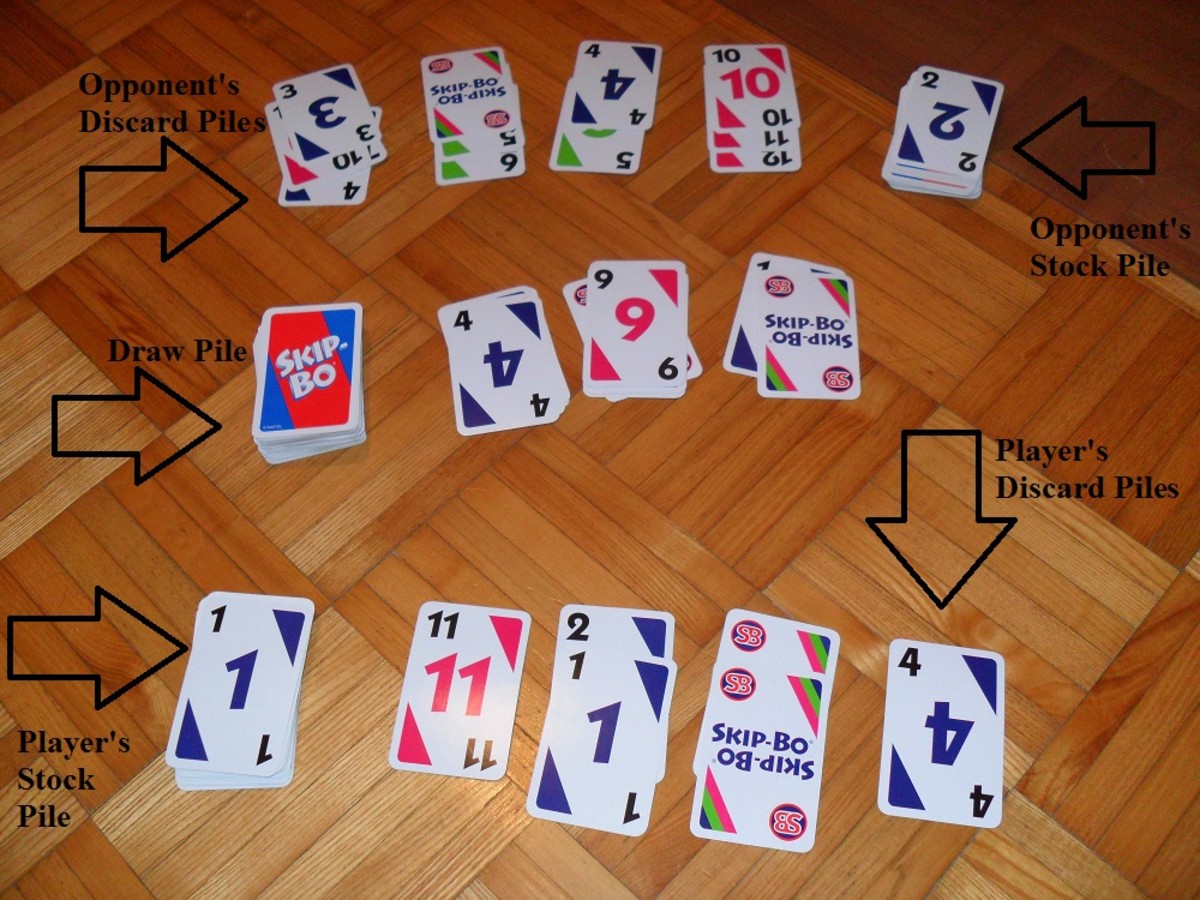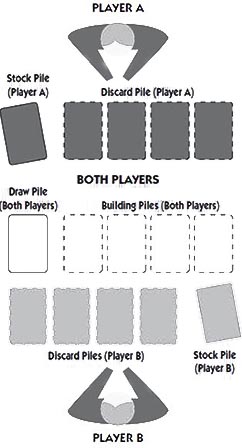

These cards are not disclosed to the opponents. So, the first player playing must first collect five cards from the draw pile. Every player, during their turn, has to keep five cards before playing.There is no hard and fast rule about the sequence of play. You can decide the sequence of play otherwise, the youngest player gets the first chance, so on and so forth.This will become our draw pile, from which the players can draw at the beginning of their turn. Everyone should be able to see the first card of the stock pile before the game begins. The first card of the stock pile has to face upwards, i.e., it must show the number/Skip-Bo on the card.The first one to finish their stock pile is the winner of the game. The objective of this game is to finish the stock pile before any other player. The first dealt cards become part of the stock pile.If the number of players is more (4–6), we can deal 10–15 cards to each player. Ideally, if the number of players is low (1–3), we can deal more cards for the game to last longer.The number of cards dealt depends on the number of players. Each player is dealt 10 to 30 cards each.

#Skip bo rules for 5 players plus#
If multiple games are going to be played, either track the number of wins for each player or a point system may be used.įor the points scoring, the winning player receives 25 points for winning plus 5 points for each card in his/her opponents' stock piles. When a build pile reaches 12, it is removed from the board and that space becomes empty for another pile to be started play continues until one player has played their final start card.įor single rounds, whoever goes out first is the winner. When no more plays are available, the player discards one card to either an empty discard pile or on top of an existing one and play passes to the next player. If the player can play all five cards from their hand, they draw five more and continue playing.

They must play either the next card in sequential order or a wild Skip-Bo card, using either cards in hand, the top card of their stock pile, or the top card of any of their four discard piles.
Each turn the active player draws until they have five cards in hand, though there are cases of not drawing more cards to equal five cards, instead doing a draw of a certain number of cards. The shared play area allows up to four build piles, which must be started using either a "1" card or a Skip-Bo, and each player also has up to four personal discard piles. Each player is dealt 30 cards (recommended 10-15 for faster gameplay) for their pile with only the top card visible, and a hand of five cards, and the remaining cards are placed face down to create a common draw pile. The player with the middle age goes first. The object of the game is to be the first player or team to play out their entire stock pile(s). Two to four people can play at a time as individuals, or, six or more players in teams (no more than three partnerships). The remainder of the fourth deck was discarded. In addition, the aces, twos and threes in the fourth deck were marked SKIP-BO. Before 1980, the commercial game consisted of four decks of regular playing cards with eight SKIP-BO cards replacing the standard two jokers in each deck. Alternatively, the 162 cards could be three regular decks of playing cards, including the jokers, with ace to queen corresponding to 1 to 12 and the kings and jokers corresponding to the SKIP-BO cards. The deck consists of 162 cards, twelve each of the numbers 1 through 12 and eighteen "SKIP-BO" wild cards which may be played as any number.


 0 kommentar(er)
0 kommentar(er)
